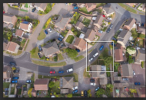- Joined
- Aug 23, 2018
- Messages
- 16
- Reactions
- 12
- Age
- 43
Flies great. Great battery life. Tried a few sample photos and it looked fine. However Im a pixel peeper and trying to verify my lens is centered decently. Anyone have good tips for testing it on this guy?
I had sent back a 1st run Mavic 2 pro when they came out because my left side was a mess in the corners. Im not sure how much QC has been put into these cameras. I shoot my ground stuff with a D850 and Nikon lenses so I am spoiled by that level of quality.
Anyhow. Im more of a photographer then a movie guy so Im a little partially disappointed that it doesnt appear to take sharper photos then the 2 pro. Anyone else notice this in comparing? Anyone else find their lens decentered at all?!? I think mine is ok, but trying to verify the left side isnt softer then the right and need daytime light (dark gloomy day here in Sk, Canada) to properly test.
My expectations werent anything ridiculous but for the money I was hoping the optics would be a step up. Everything else appears to be.
Any thoughts/comments?
Jeff
I had sent back a 1st run Mavic 2 pro when they came out because my left side was a mess in the corners. Im not sure how much QC has been put into these cameras. I shoot my ground stuff with a D850 and Nikon lenses so I am spoiled by that level of quality.
Anyhow. Im more of a photographer then a movie guy so Im a little partially disappointed that it doesnt appear to take sharper photos then the 2 pro. Anyone else notice this in comparing? Anyone else find their lens decentered at all?!? I think mine is ok, but trying to verify the left side isnt softer then the right and need daytime light (dark gloomy day here in Sk, Canada) to properly test.
My expectations werent anything ridiculous but for the money I was hoping the optics would be a step up. Everything else appears to be.
Any thoughts/comments?
Jeff













